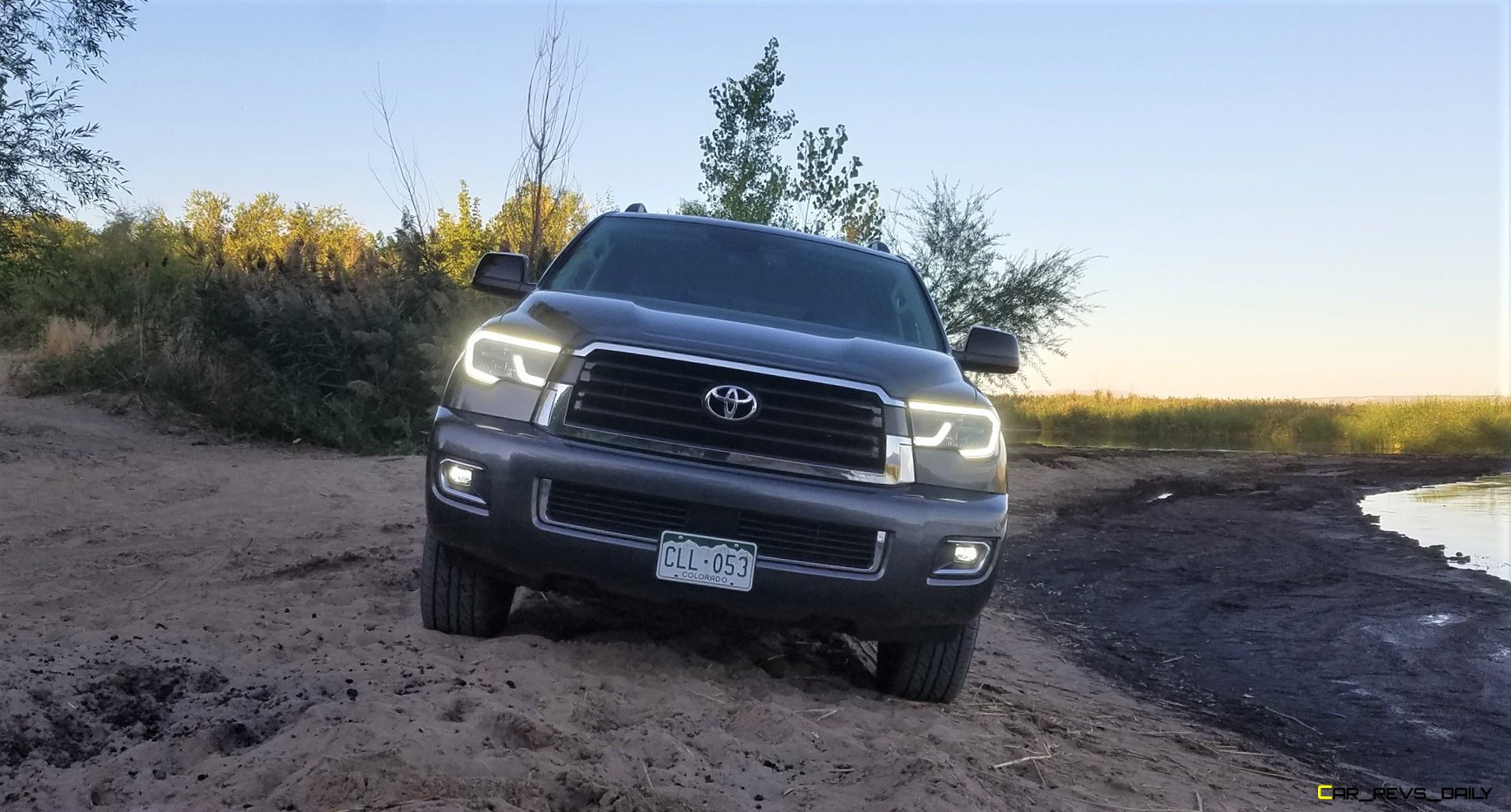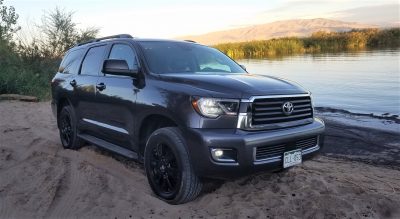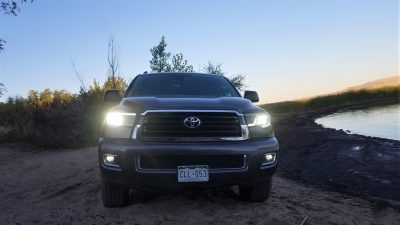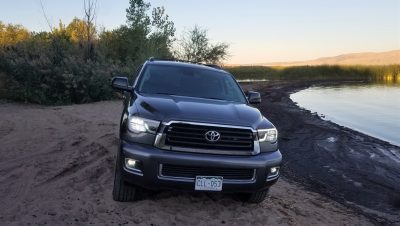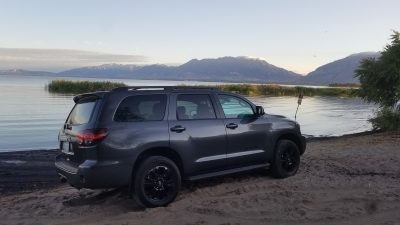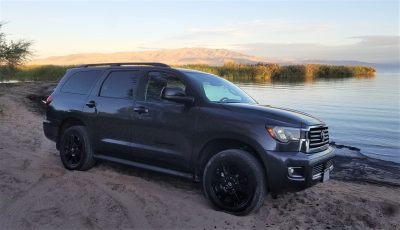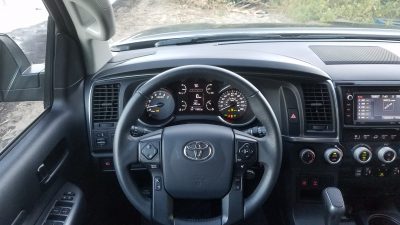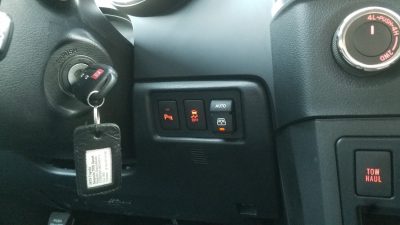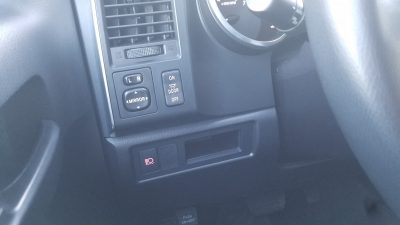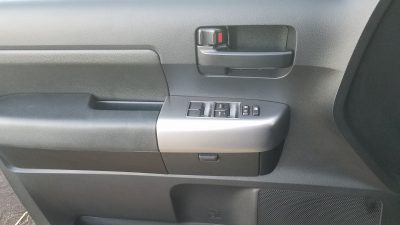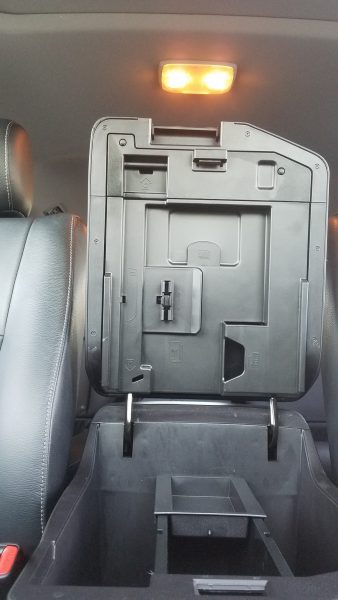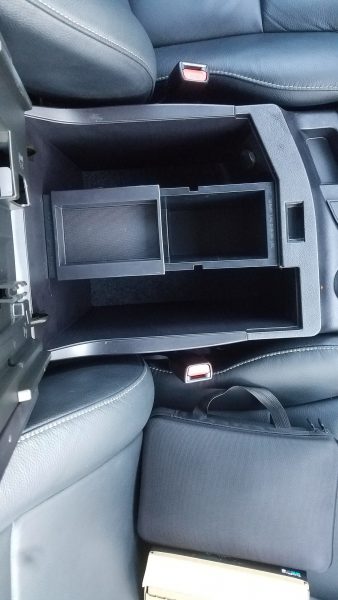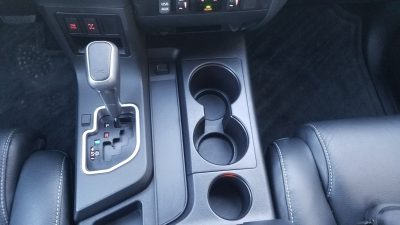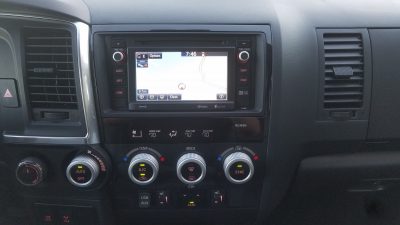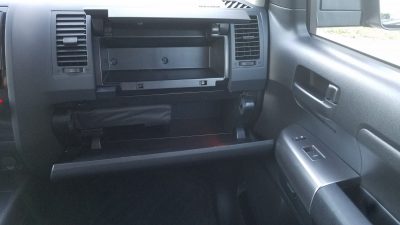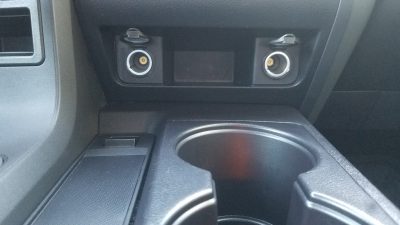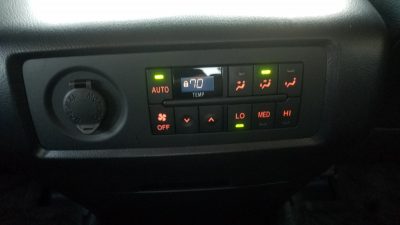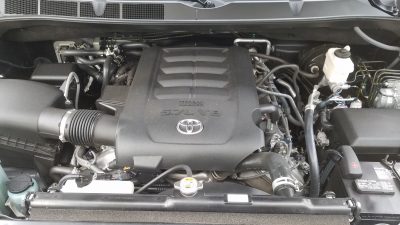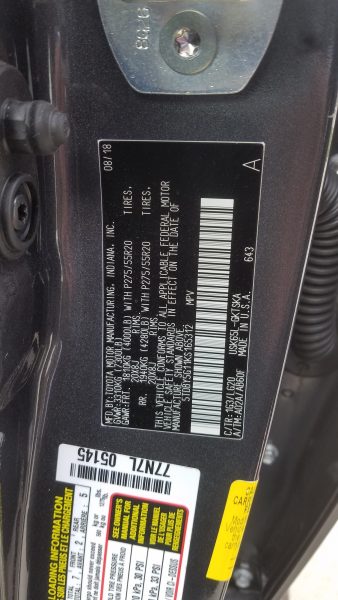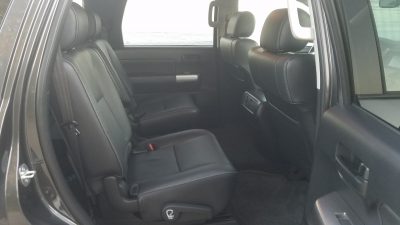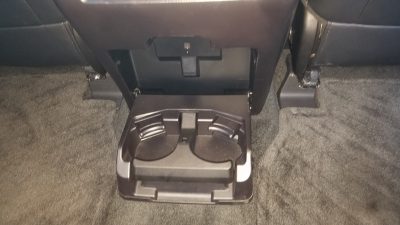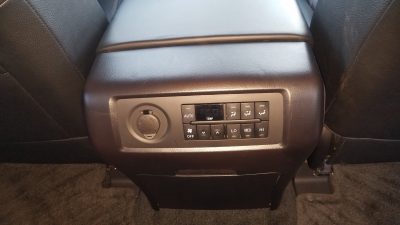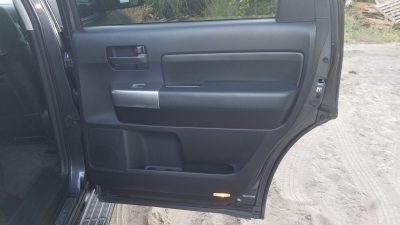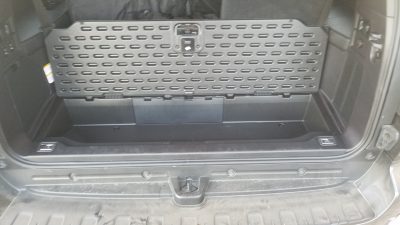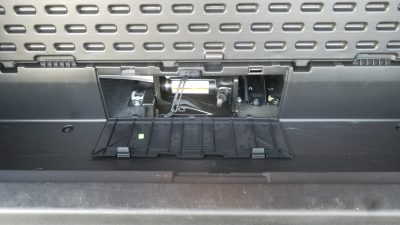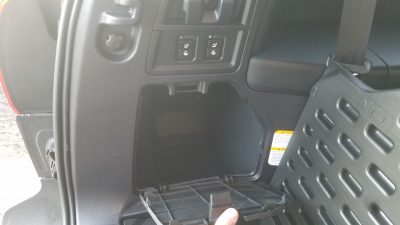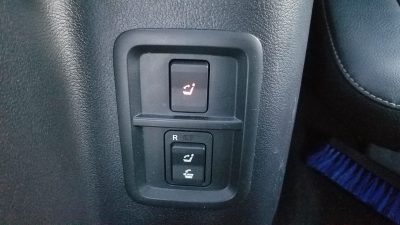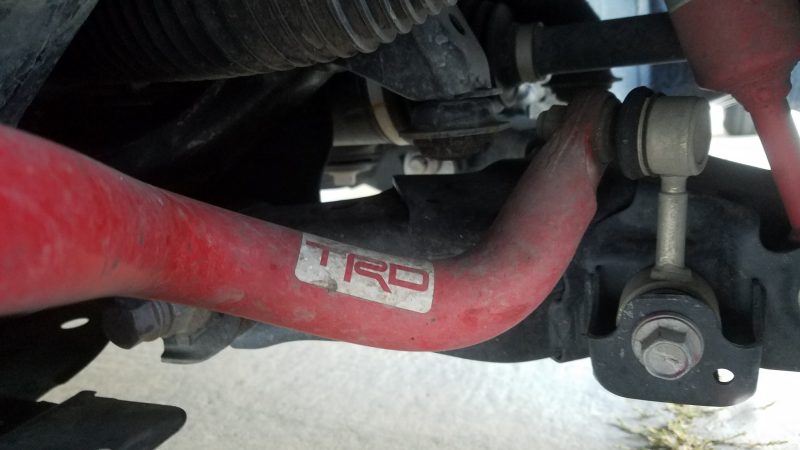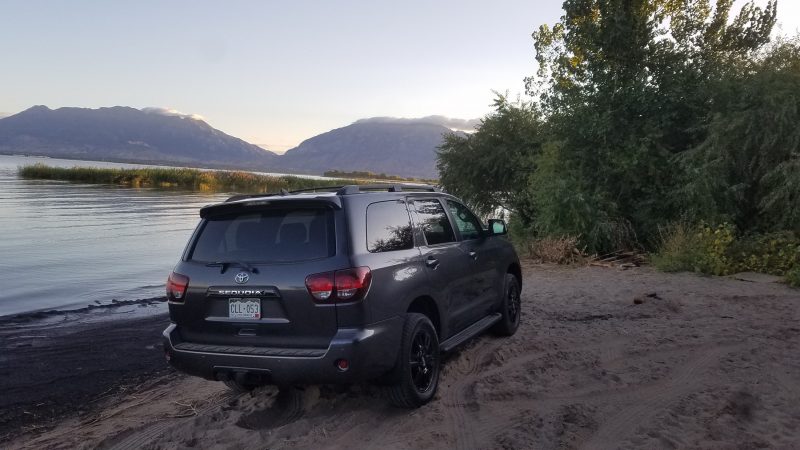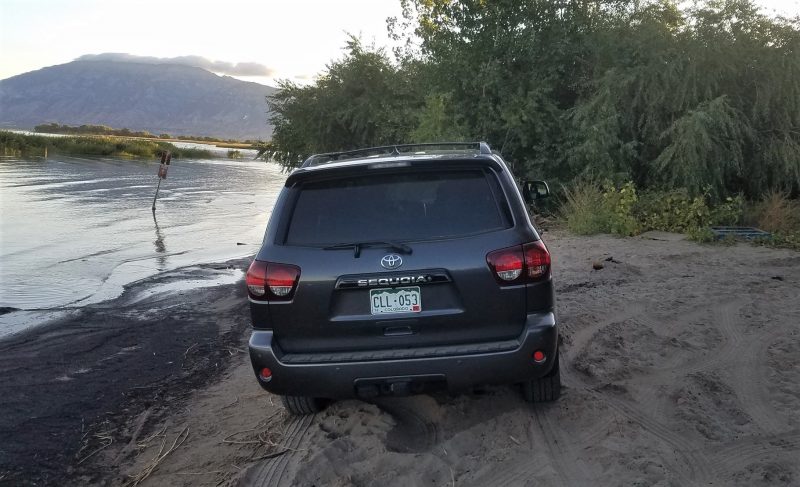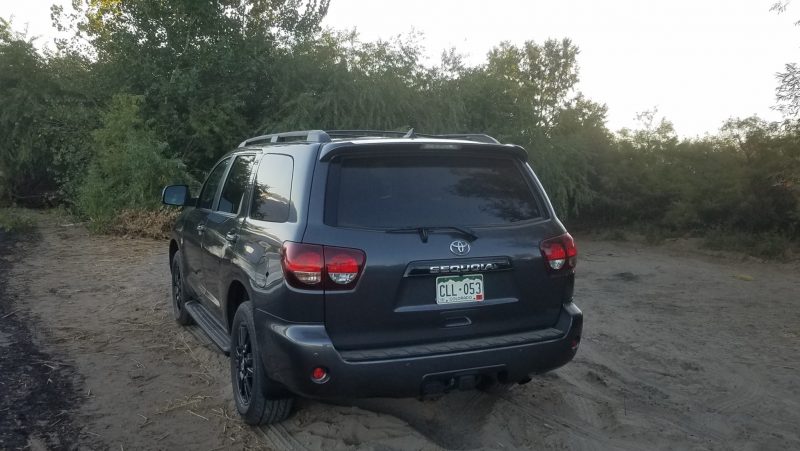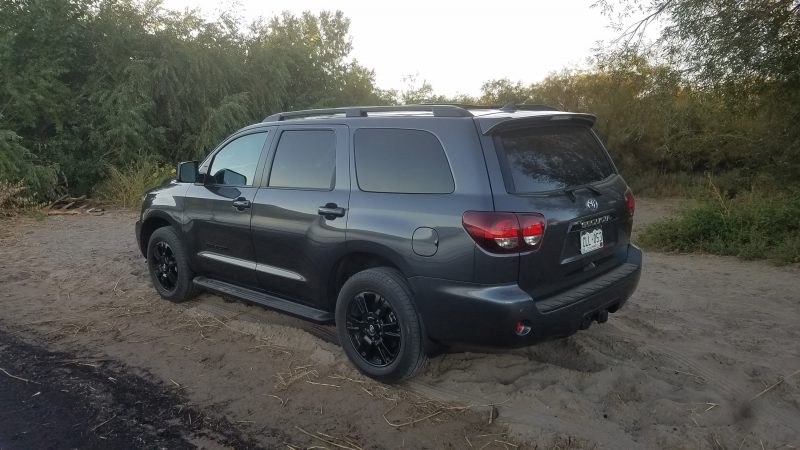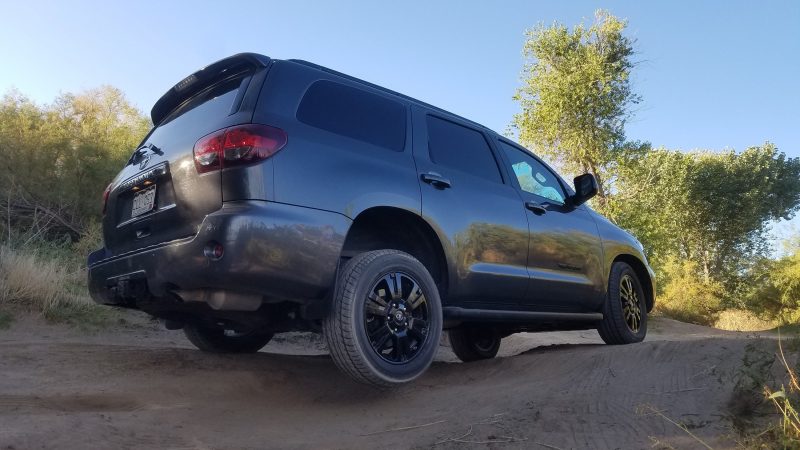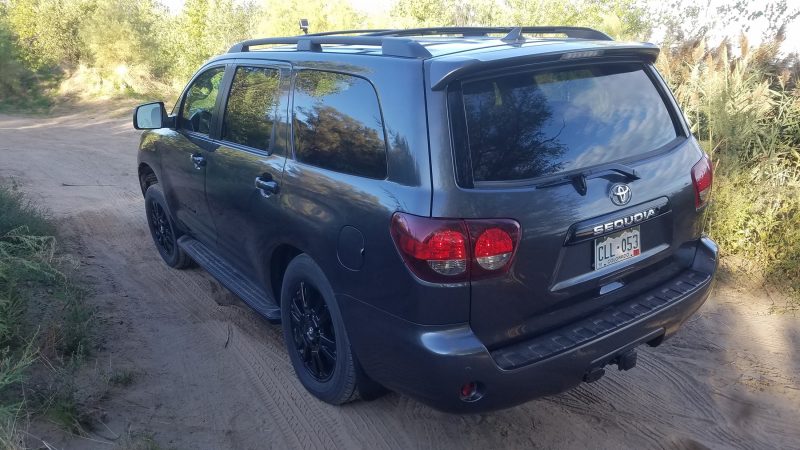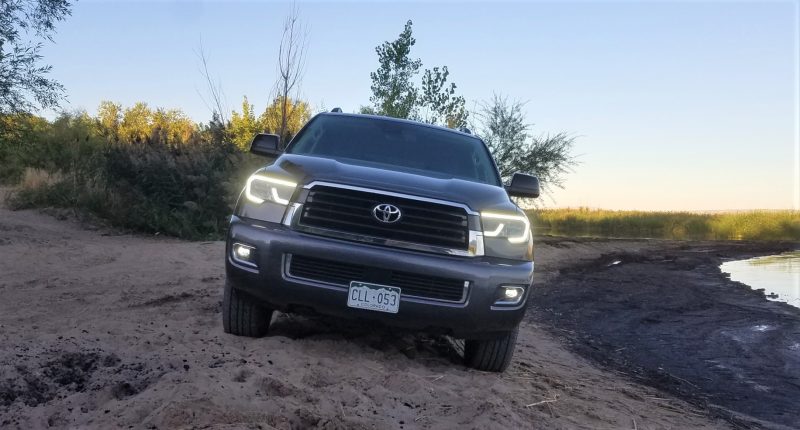The only major update for to the Toyota Sequoia 2019 is the all-new TRD Sport trim level.
In addition, many safety features are now standard that were optional in the past. This includes blind-spot monitoring, automatic emergency braking and rear cross traffic alert. While the platform is over a decade old, it is still relevant. Toyota has one of the best reputations for reliability and the 5.7 V8 is still on par with its large SUV rivals for horsepower and torque.
Review Video
Outside
The Sequoia is very large and has a significant presence, yet it still somewhat resembles a bloated marshmallow. The smooth curves and overall rounded look may not be the aesthetic some buyers are looking for. Our TRD Sport test model came with magnetic grey metallic paint and 20-inch gloss black alloy rims, which make for a beautiful pairing.
The hi and low beam headlights, daytime running lights, and fog lights are all LED. The new lighting helps give the Sequoia an up-to-date feel and look and provides an adequate amount of light. Another great aspect about the lights on the Sequoia is that they pass the fog light test. The headlights don’t have to be on for the fog lights to be on, however the daytime running lights will be on with the fog lights.
Having a large, in-your-face grill is becoming commonplace on many vehicles today, but the Sequoia doesn’t follow that trend. The grill is large enough to feed and cool the powertrain, but not overly large. The hood has two bumps on the outboard edges that are reminiscent of the first Dodge Viper GTS roofline. This gives the sequoia a sportier look but doesn’t impede the driver’s view.
The side profile of the Sequoia shows that passenger room has been given priority over cargo room. Both the front and rear doors are massive, which makes entry and exit easy. Legroom in both the front and middle rows is also great. The rear spoiler also helps the TRD Sport earn its name with good aesthetics. Giant taillights adorn the back of rear quarter panels and the liftgate. Speaking of liftgate, the Sequoia is the only vehicle in its class that has a power rear window that fully drops. This is great for long loads and for giving the dogs some fresh air.
While the overall proportions are great on this vehicle, when compared to large American SUVs, the bumpers stick out farther than they need to both fore and aft and look slightly out of place. The only vehicle with more obvious bumpers are the Nissan Armada/Infiniti QX80 duo.
Inside
Stepping inside, the Sequoia greets you with an enormous interior. The seats are comfortable and there is more than enough headroom, shoulder room, hip room, and leg room for most people. The sequoia can easily accommodate people over six-feet tall.
While eight passenger seating is standard on the SR5 and Limited trim levels, all others come standard with seven passenger seating and captain’s chairs for the middle row rather than a bench seat. The TRD Sport falls into the latter category with second row captain’s chairs. There is an optional center console for the 2nd row, but our tester wasn’t equipped with that. For comfort and convenience. there are three climate control zones, heated front seats, and cup holders everywhere.
Even the third row is large enough to fit two average sized adults comfortably for the long haul. There is enough room for three adults in the third row for short trips, but it would be a little cramped. The third row is also able to recline with the push of a button or fold flat when extra cargo room is needed.
The Entune infotainment system has a 6.1-inch screen and includes Bluetooth, HD radio, traffic, weather, satellite radio and navigation, but lacks Apple Carplay, Android Auto, and Wi-Fi connectivity. This is smaller than many competitors and feels like it could use an update. It is oriented so both the driver and front passenger can access the system equally. In most vehicles this is fine, but the Sequoia is so large that it’s difficult for the driver to reach many of the buttons and dials without leaning significantly out of the seat. This is annoying at best and risky at worst.
Toyota has done a good job with storage and organization features throughout the Sequoia. The cupholders in the center console are removable to make for a larger storage area. The passenger side has lower and upper gloveboxes. Included are also cupholders and storage areas within all the doors, and a variety of storage cubbies throughout the entire vehicle.
Overall, the interior has a feeling of utility and durability rather than luxury and comfort. It has a plasticky feel to it with a lot of hard touch surfaces. We didn’t notice any noises or squeaking from all the plastic, but we can’t help but wonder if the interior will get noisy over time.
Driving
Having driven other similar vehicles like the Nissan Armada and even older versions of the Sequoia, we were pleasantly surprised at how well the TRD tuned Bilstein shocks and TRD tuned front and rear anti-sway bars took the floaty feeling out of the ride. The handling was very impressive for a vehicle as large as the Sequoia.
The 5.7-liter V8, also used in the Tundra, puts out 381 horsepower and 401 foot-pounds of torque. There is plenty of power on tap and the 6-speed transmission does a good job getting the power to the wheels. It always shifted smoothly but was a little slow, and we didn’t miss the extra gears that many of the competitors have. In the Sequoia, all that power comes at a price: 14 mpg combined EPA estimate. This is one of the lowest EPA estimates for any SUV we’ve tested.
On the highway the Sequoia is smooth and settled. Body roll is minimal, and potholes reduced to small bumps with the TRD tuned front and rear independent suspension. There is plenty of power to pass slower moving vehicles or to maintain speed going uphill without feeling like it’s a struggle. When it comes time to stop, the brakes are smooth and linear but don’t provide a lot of feedback.
Towing with the Sequoia is a breeze. Weighing in at nearly 3-tons, the 4wd Sequoia can tow up to 7,100 pounds. We aren’t sure what the limiting factor is in the Sequoia as competitors like the Chevy Tahoe, Ford Expedition, and the Nissan Armada can tow 8,500+ pounds. When towing our 5,000-pound travel trailer the Sequoia felt just as stable and controlled as the other vehicles in its class. The Tow/Haul mode is very aggressive, holding gears longer and increasing throttle sensitivity and response. One downside is that there is no optional or standard factory installed trailer brake controller, so an after-market controller must be installed for many towing applications.
Off-road, the TRD Sport has very little wheel articulation, but the rest of the Sequoia’s systems remain intact. The 4wd system has a low range transfer case with a separate button to lock the center differential. This is a feature that more SUVs and trucks should have, as it allows for using 4wd high on pavement and 4wd low for low speed tight turning maneuvers. When extra traction is needed, the center differential can be locked for off-roading or slippery surfaces. ATRAC, Toyota’s off-road traction system, is also standard and worked very well in controlling variable wheel speed across an axle.
Pricing
The 4wd TRD Sport trimmed Sequoia starts at $54,640, but our test model came with the TRD Sport-Premium package which added leather seats, heated front seats, power reclining and folding third row, premium audio, and a few other features for an additional $3,810. This brings the total price of our test model, including the $1,295 destination fee, to $59,745. This is for a mid-range Sequoia with pricing that roughly lines up with the mid-range Armada, Tahoe, and Expedition.
So What?
Toyota has built a solid reputation for reliability. Does this make up for the outdated platform and lack of features in the 2019 Sequoia? That’s something potential buyers will have to consider. The Sequoia is great for anyone that needs a vehicle that can move the whole family while being able to pull a trailer or do some light off-roading. There are competitors like the Volkswagen Atlas which provides nearly the same amount of interior room in much smaller, nimbler unibody framed package. Body on frame SUVs are dying, but they still have a place in today’s world.
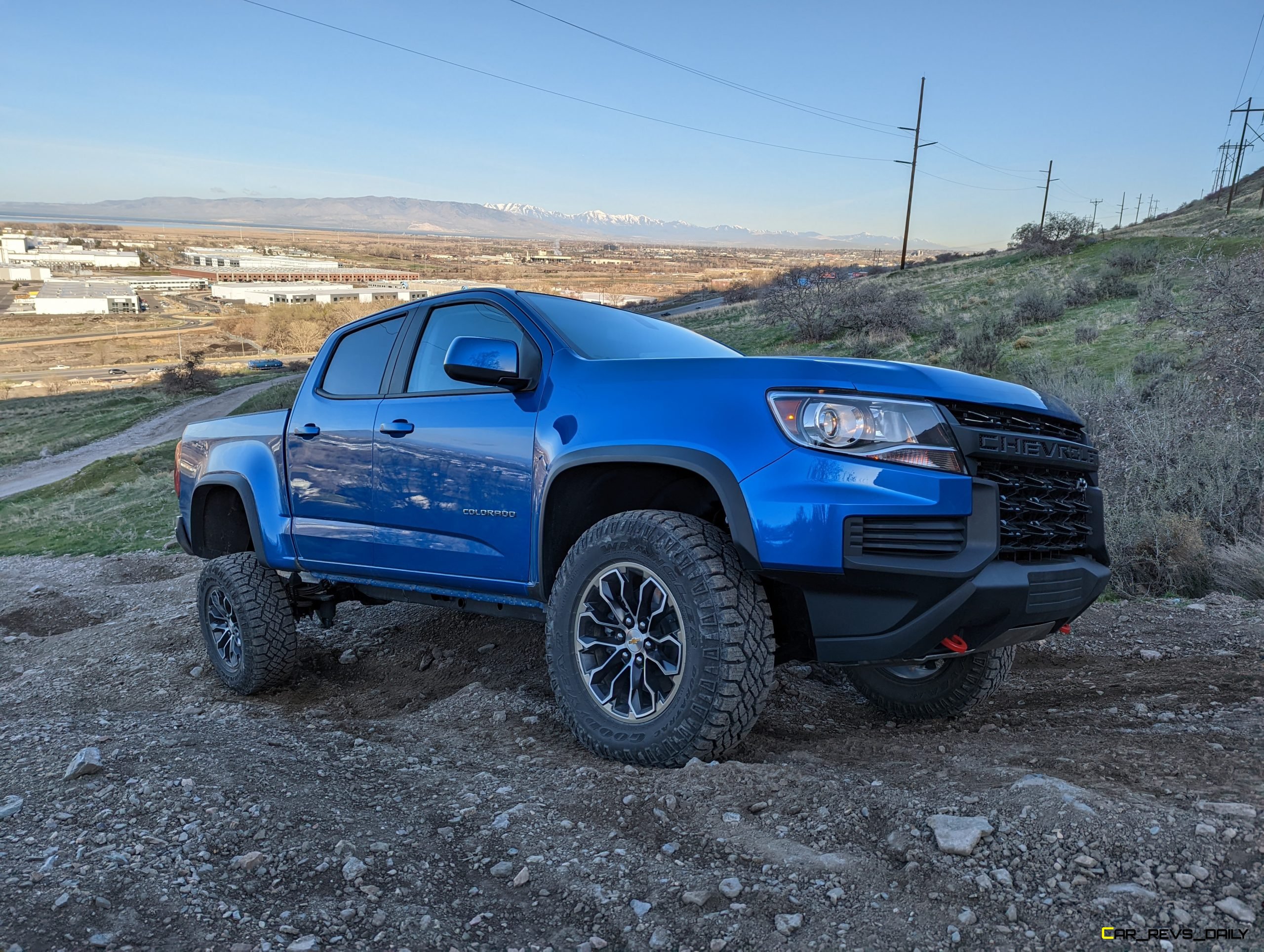
Matthew Barnes is an experienced towing expert. He works as a mechanical engineer and his day job involves testing a variety of vehicles while towing trailers of all types and sizes. Matt shares his knowledge by writing for automotive news outlets in the evenings. When he’s not working he can be found spending time in the great outdoors with his family. He enjoys camping, hiking, canyoneering, and backpacking. Whenever possible he spends time riding in or on any power sports vehicle he can find and claims he can drive anything with a motor, which probably isn’t true.
Matt lives in the Utah mountains and often posts cool off-roading videos to his Instagram and YouTube channel.

